Electromagnetic defect of the stator of an asynchronous electric motor
Электромагнитные дефекты, Вибродиагностика
Defects of electric motors of electromagnetic origin occupy a special niche in technical diagnostics, their identification is complicated, separate books are devoted to them. In this article I will share a recent case from my practice.
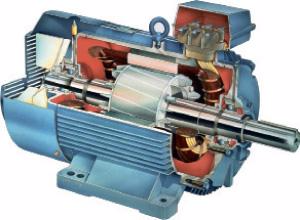
A vibrator from a contractor commissioning organization approached me and shared his problem. There is a fan in the belt drive, after balancing the vibration level has fallen, but exceeds the permissible value. In the 100 Hz spectrum, the source is presumably an electric motor. I naturally responded to a request for help, 100 Hz - this is always interesting, especially if the electric motor is 3000 rpm.
We remove belts for scrolling the electric motor idling. Using a hitch in preparation for switching on, from idleness we determine the natural frequencies by a shock test.
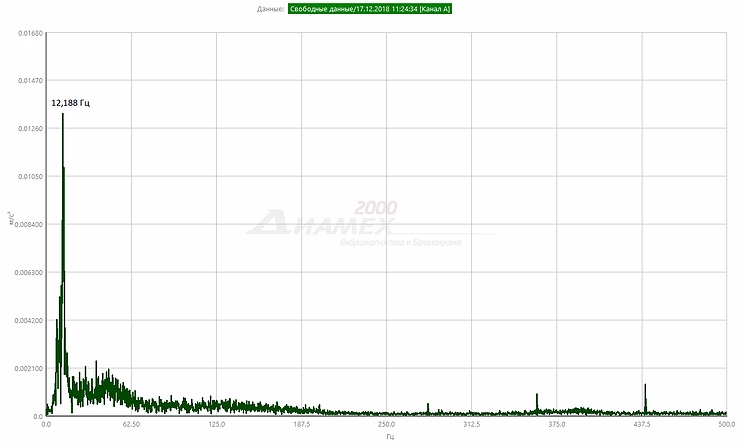
The natural frequency is not high - 12.188 Hz, which is not surprising, since the electric motor is mounted on a frame with vibration isolators. So, we turn on the electric motor itself and measure the RMS vibration velocity.
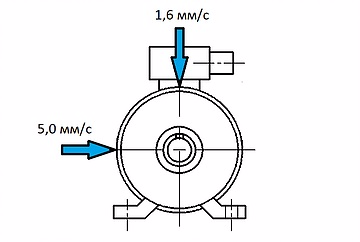
Spectrum in the vertical direction:
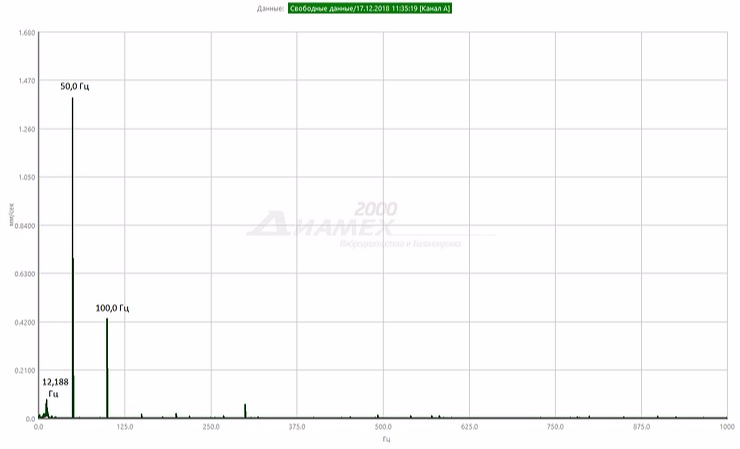
Spectrum in the horizontal direction up to 1000 Hz:
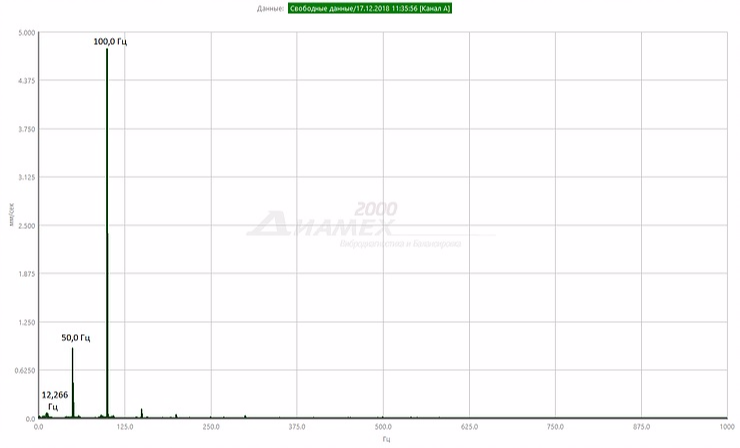
Horizontal vibration spectrum up to 2000 Hz:
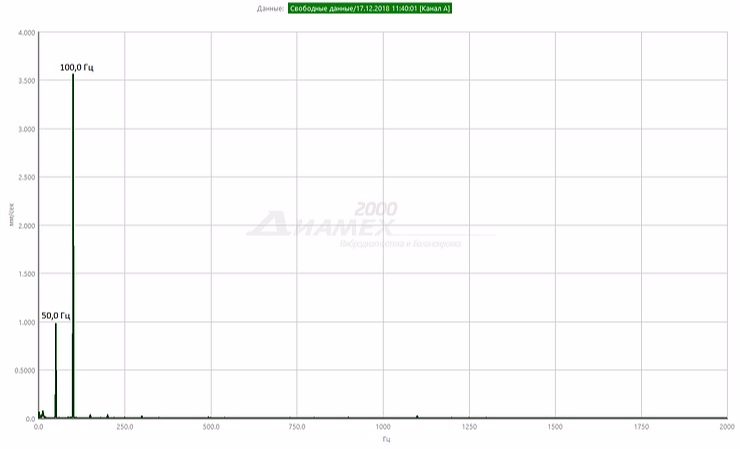
Classic. Many different problems can correspond to such a spectrum and we need to determine the nature of the defect - mechanical or electromagnetic. For ourselves, we note the absence of groove frequencies, which should be located in the region of 1100, 1200 Hz (for this electric motor, the approximate ratio of the grooves of the stator / rotor = 24/22). We will analyze the temporary signal at the time of shutdown of the motor.
Time vibration acceleration signal:
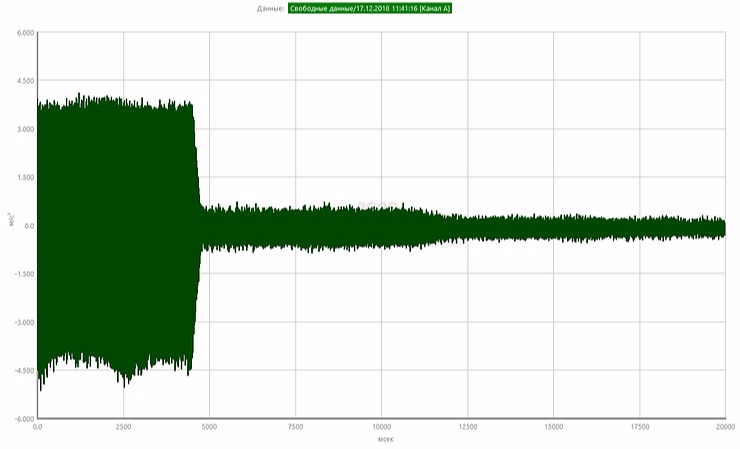
Consider in more detail the moment the power is turned off:
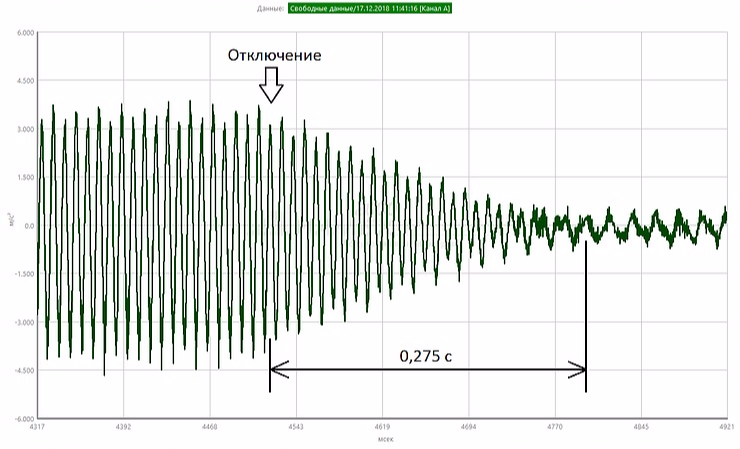
The assumption was justified - an electric defect. When the power is turned off, the magnetic field disappears, electromagnetic forces cease to act, and vibration decreases significantly in 275 ms. This period is due to the residual magnetization, although in my practice there was a case of an instantaneous vibration drop in a time signal for half a rotor revolution (at 700 rpm ≈ 43 ms).
The time vibration acceleration signal is not very informative, therefore, we consider the vibration velocity signal at the time of shutdown.
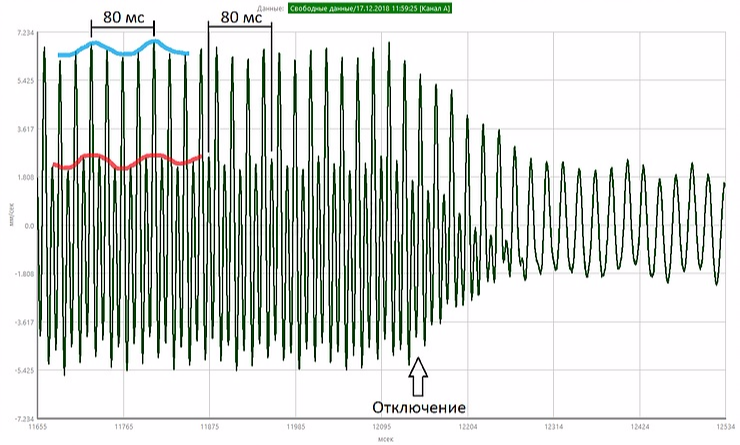
Here we see the presence of amplitude modulation with a period of about 80 ms, which corresponds to about 12.5 Hz. And now attention to the spectra of vibration velocity (I have not in vain marked the component a little more than 12 Hz) and the spectrum of natural frequencies. The most likely source of the modulating signal is the stator part of the electric motor, which, under the influence of electromagnetic processes, is excited at natural frequencies.
So, the spectra and time signals are analyzed. We discard possible mechanical defects (proved their absence on the coast) and electromagnetic ones associated with the rotor (there is no fluctuation in the amplitude of the rotation frequency) and the gap (there are no groove frequencies characteristic of various eccentricities). Probable reasons are:
- current asymmetry in the stator windings;
- short circuit of the stator windings;
- asymmetry of the supply voltage;
- phase imbalance of the supply voltage.
These defects are determined by measuring electrical parameters. If there is an opportunity to carry out this work - be sure to update the article.
That's all? Well, I do not. I showed a time signal of vibration velocity not completely. And there is something interesting from the moment the electric motor starts at idle until it stops.
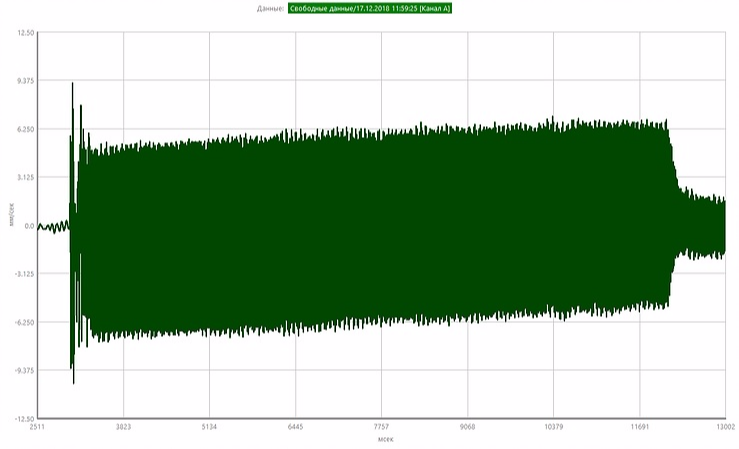
Increase in the launch area:
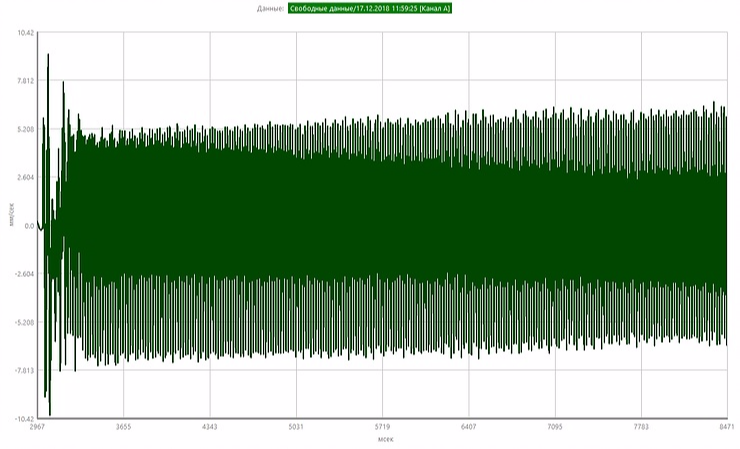
And again in the area of power failure:
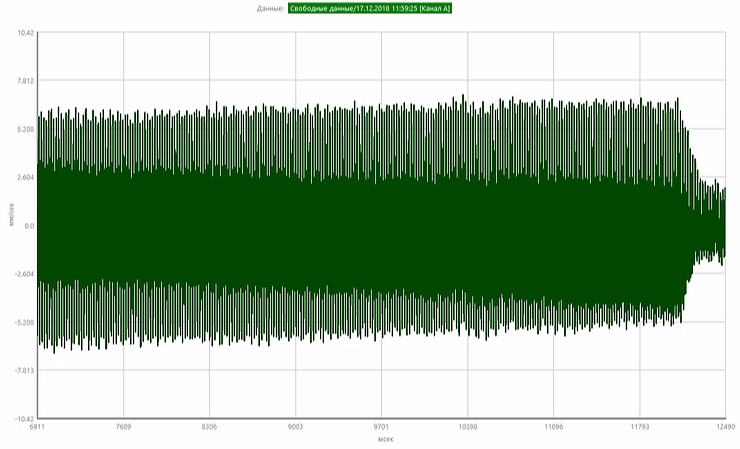
The dark green zone is the period of 10 ms (100 Hz), the more thinned zone is the period of 20 ms (50 Hz). Can you explain the reason for this?
I do not often work with time signals, and I saw this for the first time. Those who know this phenomenon may not read further. And I decided to figure it out and find the reason. Let's start with a simple one. Our spectrum is very simple and actually consists of two components of 50 Hz and 100 Hz.
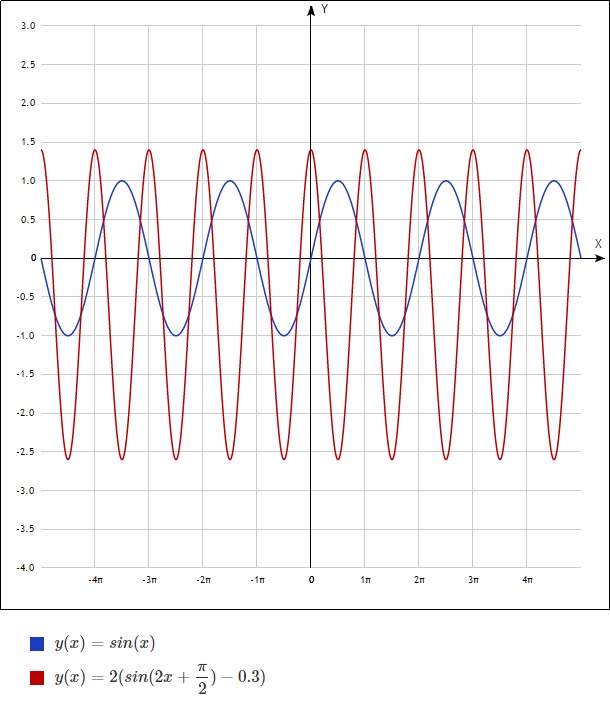
A time signal is the addition of these two sinusoidal waves (modulation from 12.5 Hz is neglected). Empirically, I selected equations of similar sinusoids and began to shift 100 Hz relative to 50 Hz in phase:

Got an analog of a real vibration velocity signal. Why is there a phase shift of the electromagnetic field component relative to the reverse? Right! In induction motors, the frequency of rotation of the electromagnetic field is ahead of the frequency of rotation of the rotor by the amount of slip.